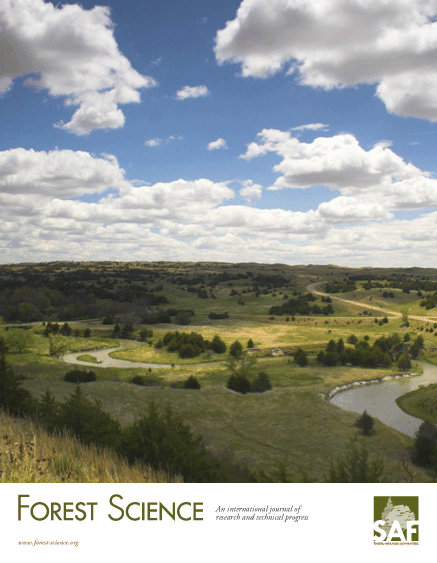-
PDF
- Split View
-
Views
-
Cite
Cite
Bruce A. Kimball, Eric C. Turnblom, Dale L. Nolte, Doreen L. Griffin, Richard M. Engeman, Effects of Thinning and Nitrogen Fertilization on Sugars and Terpenes in Douglas-Fir Vascular Tissues: Implications for Black Bear Foraging, Forest Science, Volume 44, Issue 4, November 1998, Pages 599–602, https://doi.org/10.1093/forestscience/44.4.599
Close - Share Icon Share
Abstract
The chemical constituents of coniferous vascular tissues play a role in bear forage selection. In particular, bear foraging preferences are related to the concentrations of simple sugars (nonstructural carbohydrates) and terpenes in the forage. Analyses of vascular tissue samples from trees collected in test plots indicated that both thinning and fertilization caused the sugar concentration of vascular tissues in the lower bole to increase. However, these treatments had no effect on the concentrations of hydrocarbon monoterpenes, oxygenated monoterpenes, or sesquiterpenes. These results may explain the observations that black bears prefer to forage in thinned and fertilized stands. For. Sci. 44(4):599-602.



